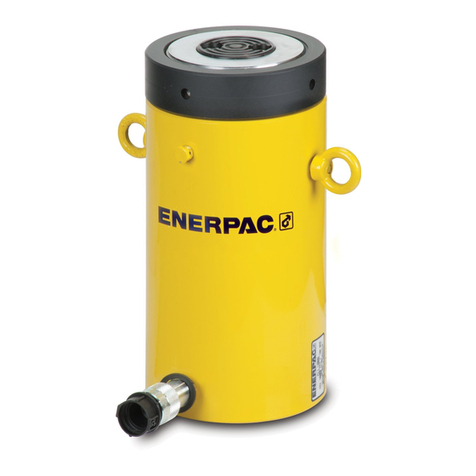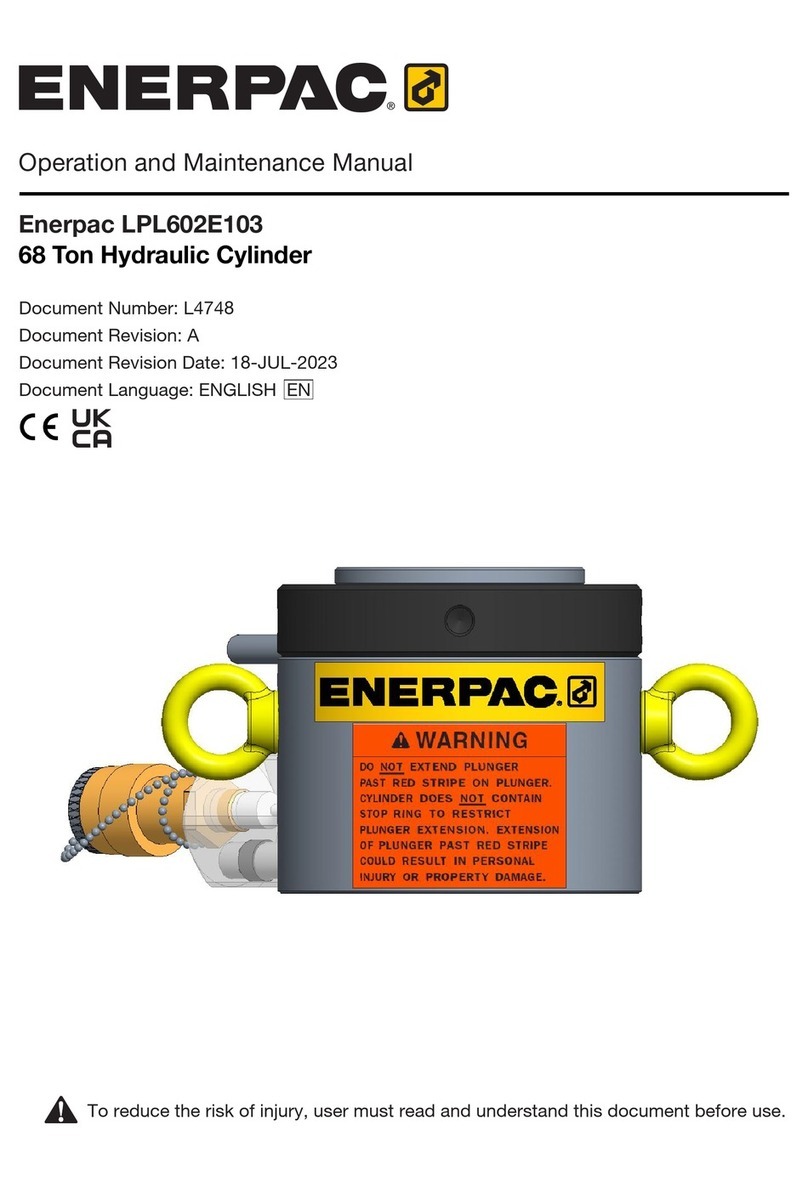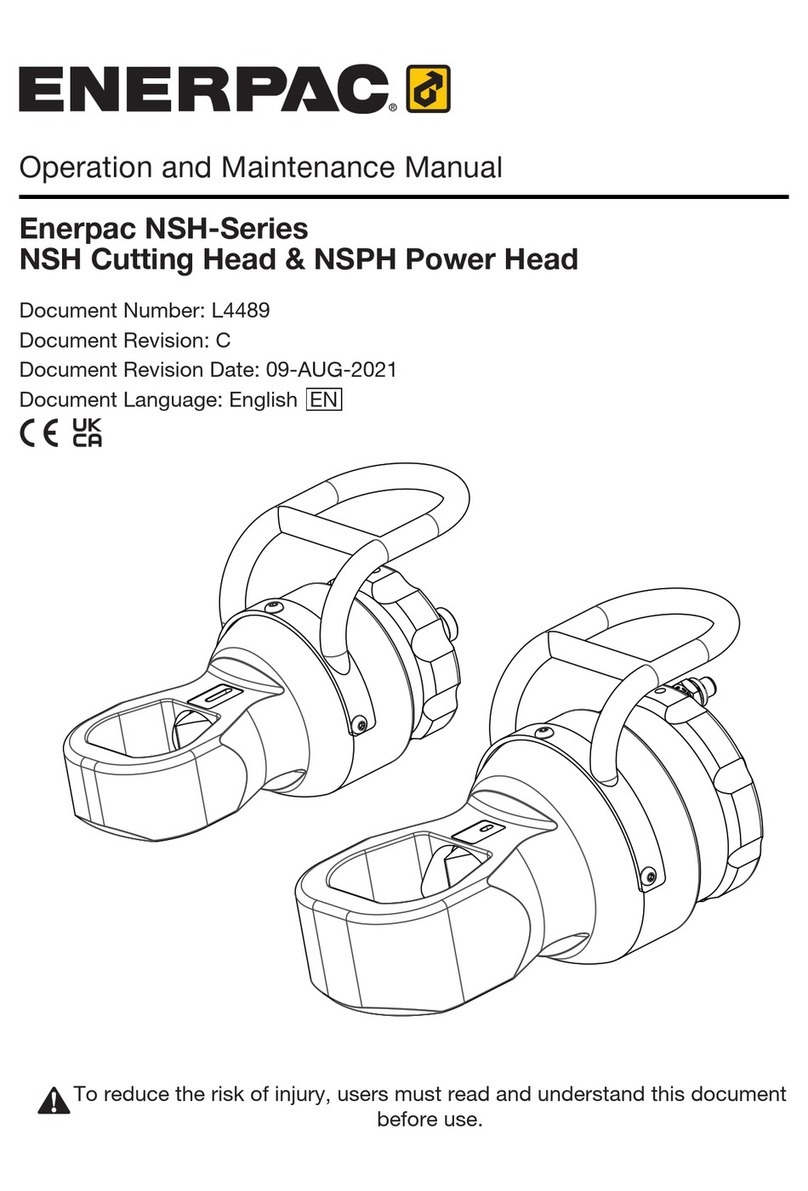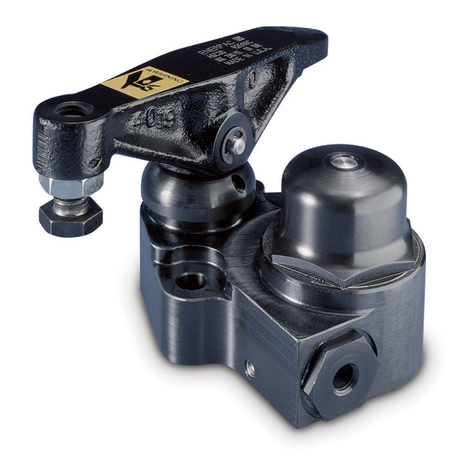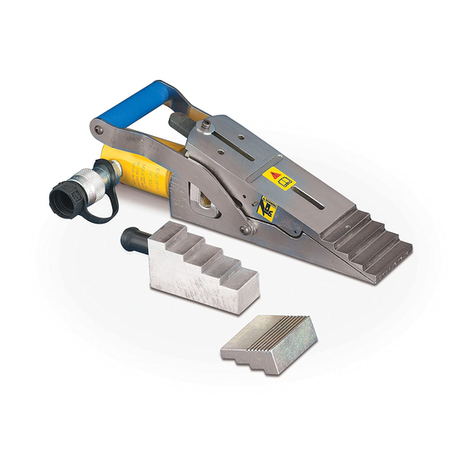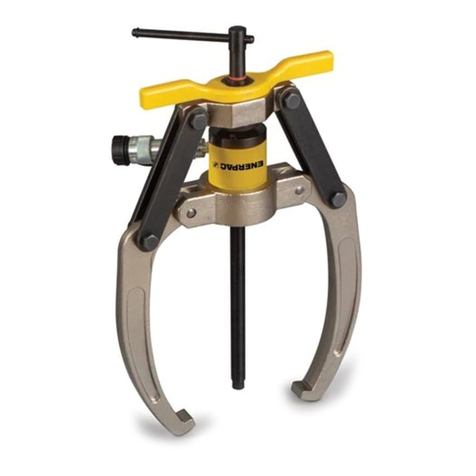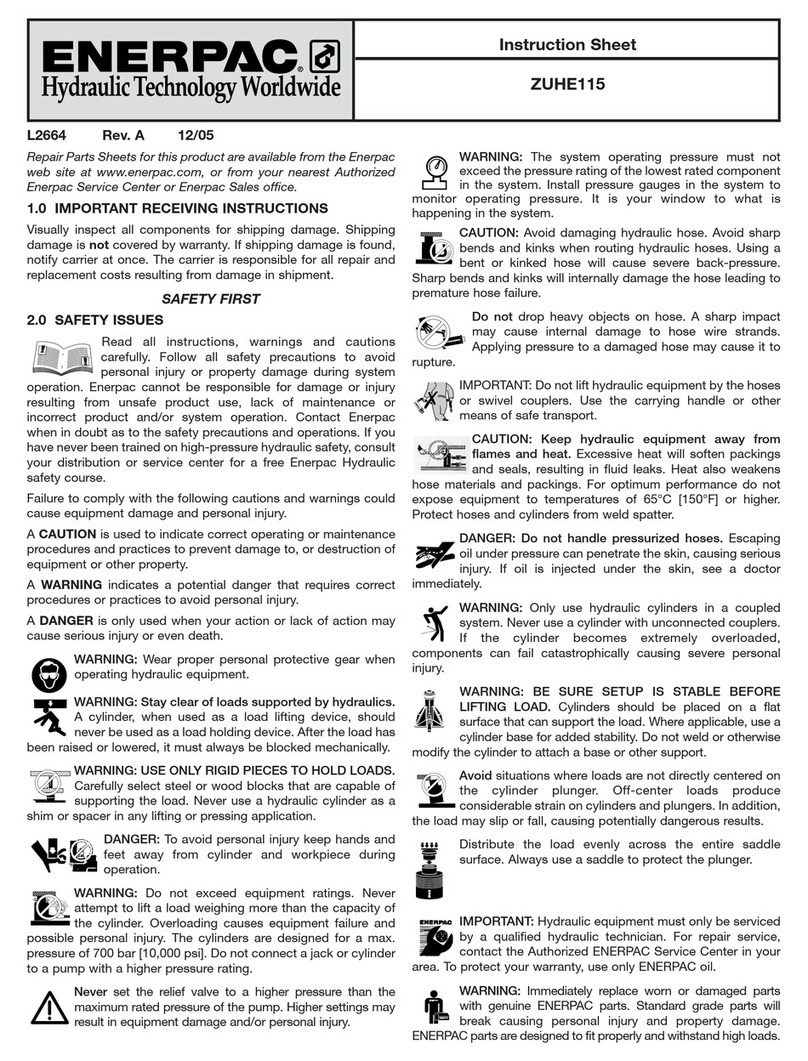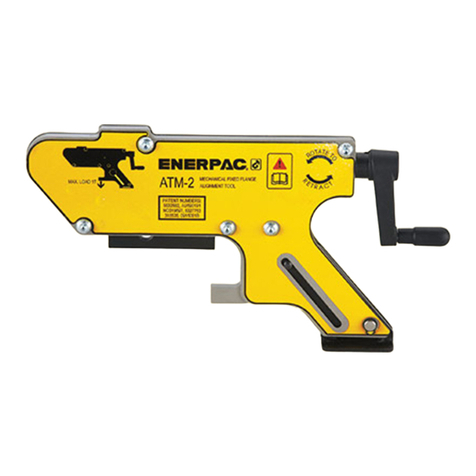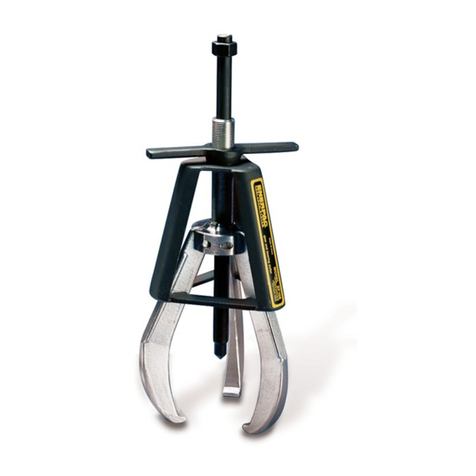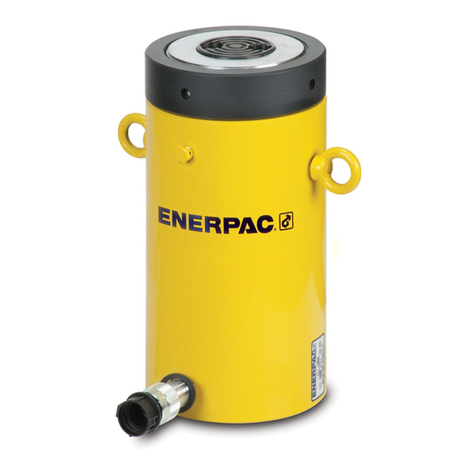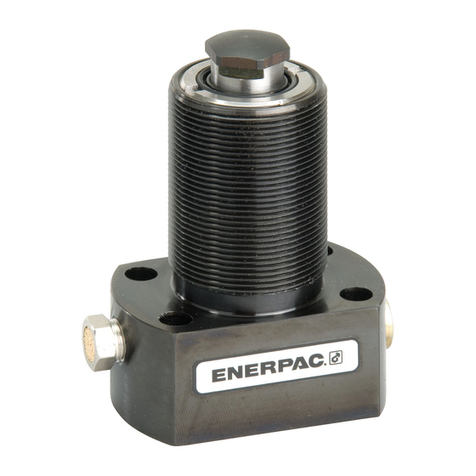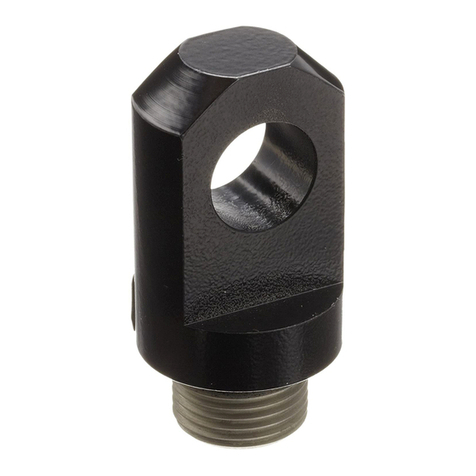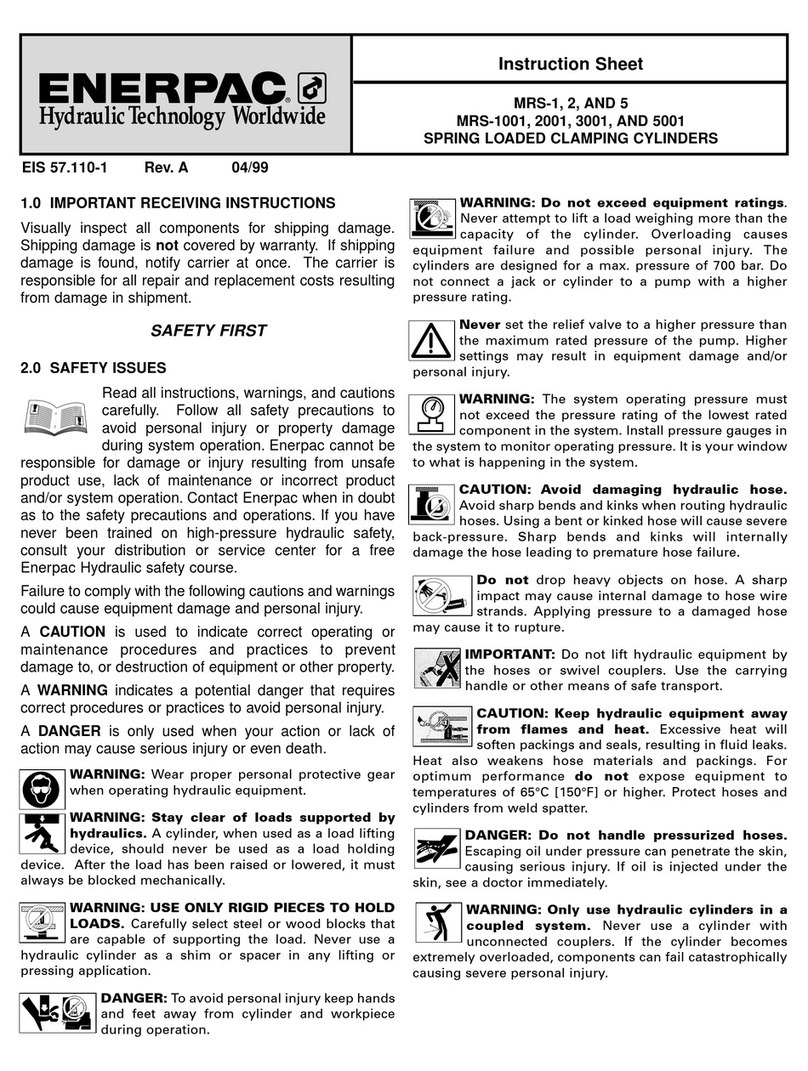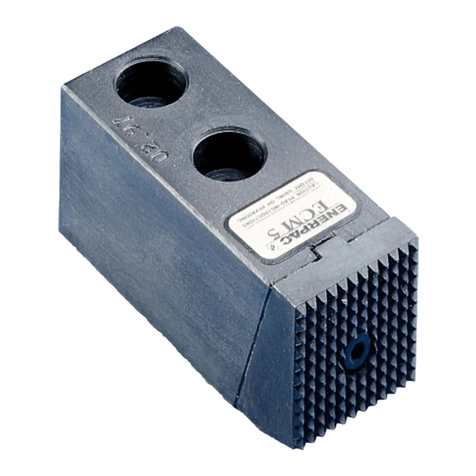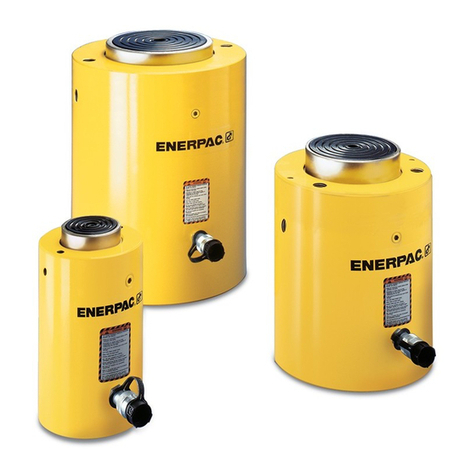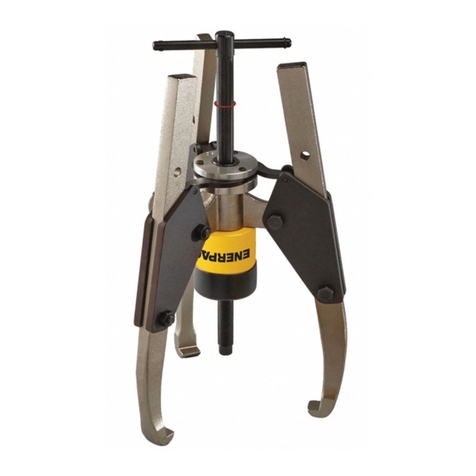
© 2022 Enerpac, All Rights Reserved. 3
• Operating procedures will vary, depending
on the system arrangement. Always read,
follow and completely understand all
manufacturers’ instructions when operating
pumps, valves and all other devices used
with the tensioners. Follow all safety
precautions contained in the manufacturer’s
manuals. Use only for intended purpose.
• Wear personal protective gear when
operating hydraulic equipment. Always wear
eye protection. Safety equipment such as
dust mask, non-skid safety shoes, hard
hats, gloves or hearing protection (used as
appropriate) will reduced personal injuries.
• Ensure that the strengths of the bolts
are known and that the recommended
tensioning applied loads are well within the
safe limits.
• Do not handle pressurized hoses. Escaping
oil under pressure can penetrate the skin. If
oil is injected under the skin, see a doctor
immediately.
• Do not pressurize disconnected couplers.
• The system operating pressure must not
exceed the pressure rating of the lowest
rated component in the system.
• Install pressure gauge(s) in the system
to monitor operating pressure. It is your
window to see what is happening in the
system.
• Never set a relief valve to a higher pressure
than the maximum rated pressure of the
pump and tensioner. If ratings are different,
relief valve setting should not exceed the
setting of the lowest rated component
(pump or tensioner).
• Do not exceed equipment ratings. Never
attempt to apply more load to a bolt than
the maximum capacity of the tensioner.
Overloading may cause equipment failure
and possible personal injury.
Failure to observe and comply with the
following precautions could result in minor
or moderate personal injury. Property
damage could also occur.
• Be careful to avoid damaging hydraulic
hoses. Avoid sharp bends and kinks when
routing hydraulic hoses.
• Do not bend beyond the minimum bend
radius specified by the hose manufacturer.
Using a bent or kinked hose will cause
severe back-pressure. Sharp bends and
kinks will internally damage the hose,
leading to premature hose failure.
• Do not lift hydraulic equipment by the
hoses or couplers. Use the tensioner lifting
eyes-bolts and appropriately rated lifting
equipment, where appropriate.
• Keep hydraulic equipment away from
flames and heat. Excessive heat will soften
packings and seals, resulting in fluid leaks.
Heat also weakens hose materials and
packings.
• For optimum performance, do not expose
hydraulic equipment to temperatures of
150˚F [65˚C] or higher.
• Immediately replace worn or damaged parts
with genuine Enerpac parts. Enerpac parts
are designed to fit properly and to withstand
high loads. Non-Enerpac parts may break or
cause the product to malfunction.
• Use hydraulic tensioners only in a coupled
system. Never use a tensioner with
uncoupled couplers.
• Hydraulic equipment must only be serviced
by a qualified hydraulic technician. For repair
service, contact the Enerpac Authorized
Service Centre in your area.
• Rope off working area and place warning
signs.
• To help ensure proper operation and best
performance, use of Enerpac oil is strongly
recommended.
CAUTION
